‘Till Death Do Us Part
On Monday, Blizzard released the last remaining cards of the upcoming Hearthstone expansion Knights of the Frozen Throne, which launches August 10.
With all cards finally out in the open, the Hearthstone community can begin to ascertain just how powerful each minion, spell, and weapon in the new set will be. Many players would argue that it’s difficult to pin-point whether or not a particular card is “OP” or “trash-tier” without first comparing its power level to that of its peers. After all, it only takes one other card to enable powerful synergies to emerge and shake up the meta-game.
While there are plenty of excellent cards to highlight from the new expansion, I’d first like to bring everyone’s attention to the new death-knight card-type being introduced this Thursday. Much like the quest cards introduced with Journey to Ungoro, death knights are powerful legendary class cards that, when played, upgrade the existing class’ hero.
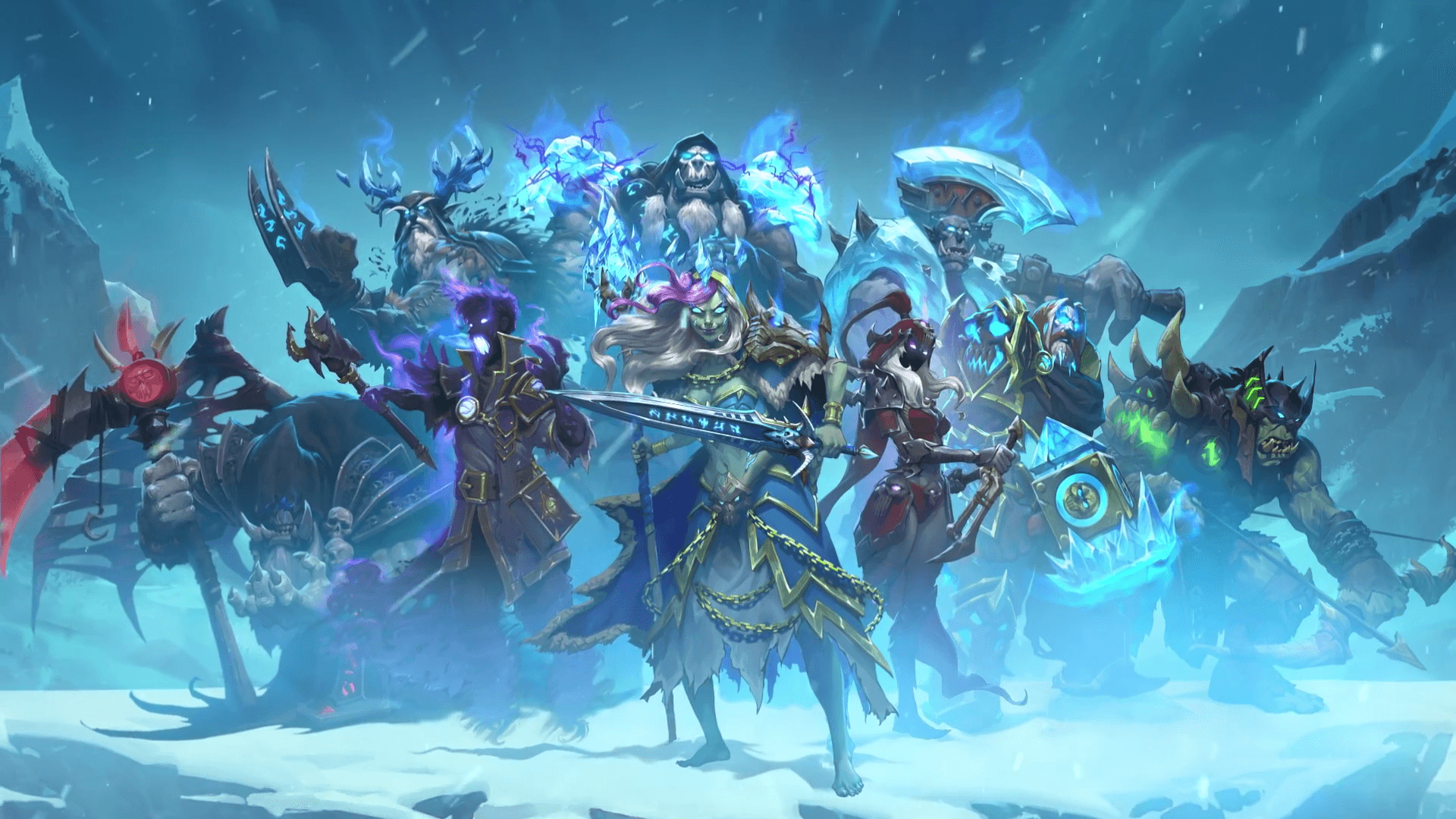
In addition to granting 5 armor when played, there are two additional components to the new card-type. The first is a battle-cry unique to each hero, while the second is a powered up hero power, much akin to the effect of Justicar Trueheart from The Grand Tournament.
Although I cannot be certain until Knights of the Frozen Throne releases on Thursday, here’s how I would rank the death knights from the new set, from worst to best:
9. Valeera the Hollow – Rogue
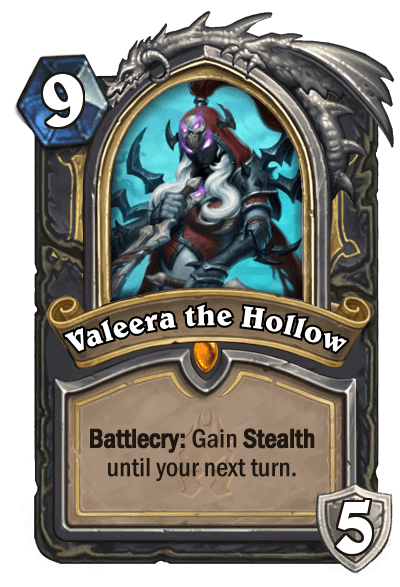
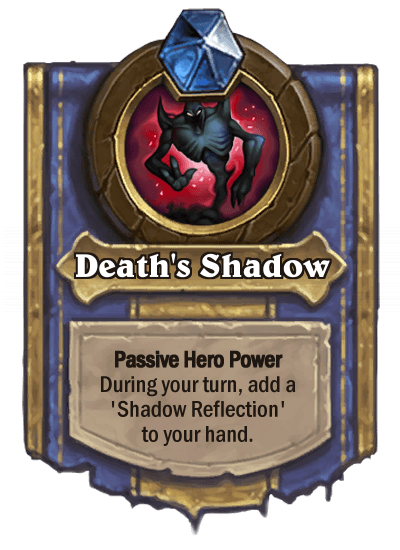

Let me be clear, right off the bat. None of these cards seem remotely bad to me. I’d be happy to pull any of these nine from a pack. That being said, Valeera the Hollow certainly seems the weakest of the bunch.
I may be completely off base here, but I simply do not think that a 9-mana version of Ice Block is good enough to justify its cost. Whereas Mage has the ability to prop Ice Block turns before it eventually activates, Valeera’s stealth will only be usable the turn that her card is played. That means that if you are already losing against another class, playing Valeera will do little more than stalling an additional turn to pull the card you need to finish off your opponent. In a dire situation like that, Valeera may be useful, particularly when using low-cost Rogue spells like Preparation and Backstab to get around her steep cost. However, using a 9-mana stall will not allow you to develop the board further, and in any situation where you already have board control, Valeera’s battlecry will go to waste. Compared to other death knights where battlecrys have an immediate effect on the battlefield for far less mana, Valeera seems like a missed opportunity for Rogue.
Thankfully, Valeera’s hero power may make up for her weak battlecry. A passive effect that brings a Shadow Reflection to your hand, Death’s Shadow may see play due to its lack of cost. The ability to play two of whatever minion you have on hand is certainly tempting, especially in fatigue matches with Warrior or Priest where every card is valuable. In this respect, Shadow Reflection serves to essentially double the amount of cards Rogue can play, even if it comes with the caveat of only working on minions with 5 cost or less. The potential for combinations with Coldlight Oracle mill archetypes or The Caverns Below quest decks may also help extend the life of Valeera. However, until I can actually get my hands on the card in real play, I’m skeptical about its value.
8. Malfurion the Pestilent – Druid
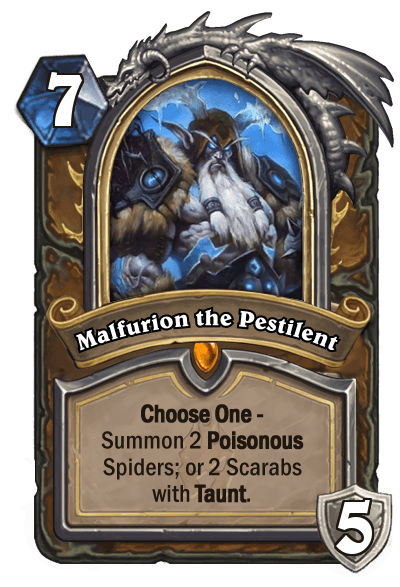
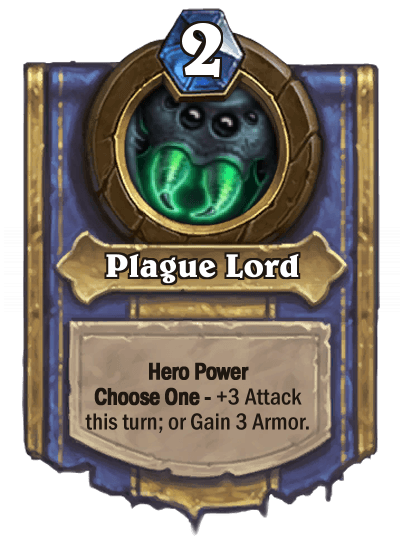
If Valeera the Hollow is the weakest of the death knights, then Malfurion the Pestilent seems the least interesting of the nine.
With a mana cost of 7, Malfurion is right in the sweet spot compared to the other death nights, and with Innervate and other typical ramp cards, it’s easy to see him being played midway through most games. The battlecry seems decent, although compared to some of the other ones on this list, I’m not sure 2 poisonous spiders or 2 scarabs with taunt is quite enough of an effect to be viable. Given that Blizzard has valued Spreading Plague and Webweave as 5 mana each, they seem to be overvaluing 1/5 minions with taunt and 1/2 ones with poisonous, especially with lower-costing adapt cards being so prevalent in the current meta.
Finally, the hero power, while a strict upgrade over what we got with Justicar Trueheart, doesn’t seem to do enough to set Malfurion apart from the other death knights. Sure, 3 attack will often be enough to remove a card from the board, which is valuable for a class without much in the way of removal. However, it does little to nothing to address big minions such as Tirion Fordring or Ysera in the late-game in control match-ups, exacerbating the issues that Druid already has in the current meta.
7. Shadowreaper Anduin – Priest
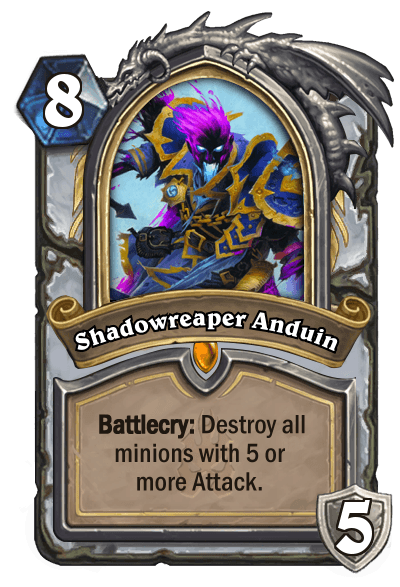

I’m pretty indifferent about Shadowreaper Anduin. On the one hand, despite the 8-mana cost, Anduin affects the board immediately when played. Skilled players will find the right time to drop him to get as much value as possible. The card is especially good when behind on board control to big minions like Mountain Giant or Medivh, but is likewise extremely bad in aggro match-ups. As such, I consider the battlecry a more situational version of Brawl, with higher potential upside at the cost of sometimes being useless.
While the battlecry is impressive, I’m not sold on the hero power. It’s true that late-game Priest usually doesn’t require as much healing as in the early-game. As such, players can play Anduin without fear of not being able to heal, much like how Shadowform is used in the occasional late-game match-up. That being said, Shadowform has rarely seen play outside of for-fun shadow priest archetypes, and this is essentially the same thing. The ability to refresh the hero power after playing a card could make it more useful, especially in a deck built around low-cost spells and minions.
Anduin may be a good fit for an aggressive midrange playstyle. For control match-ups, however, I see him running out of steam quickly.
6. Scourgelord Garrosh – Warrior

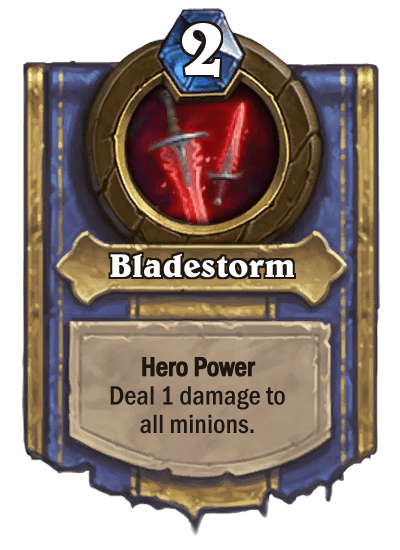
Okay. This is where the Death Knights start to pick up drastically. Scourgelord Garrosh seems like a great card. The battlecry, like Anduin’s, is impactful right away. 4/3 are great stats for a weapon, better than both Death’s Bite and Truesilver Champion, which are already fantastic cards. Add on the ability to take out up to 3 minions at a time, and the value for Shadowmourne skyrockets. I’d value it at 6 mana, at the very least.
For an extra 2 mana, however, we get 5 armor and a pretty darn good hero power. While not nearly as insane as some of the later hero powers on this list, Bladestorm looks like it’ll have plenty of synergy with Warrior cards, both old and new. From staples like Armorsmith and Acolyte of Pain to new cards like Death Revenant and Val’kyr Soulclaimer, Enrage/Damage Warrior is going to be a huge archetype thanks to Garrosh. Throw in the already excellent new Rotface legendary for the class, and Warrior seems to be in a great place going into Knights of the Frozen Throne.
5. Frost Lich Jaina – Mage

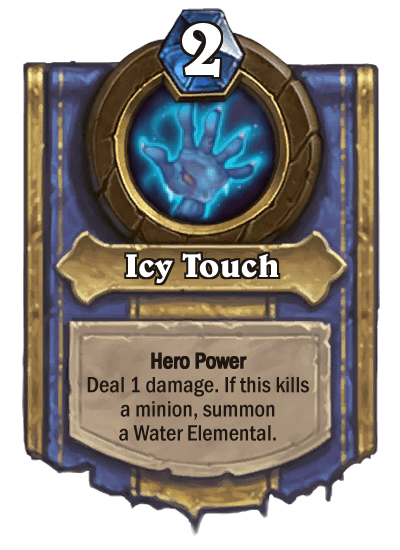
Frost Lich Jaina is another winner. At 9 mana, the card is expensive, but typical stall cards like Frost Nova and Doomsayer ensure that Mage will live long enough to be able to play it. Like how Scourgelord Garrosh will likely support an entire archetype for Warrior, I see Jaina helping to support Freeze Mage decks in new and exciting ways.
The battlecry, while not as impactful as Warrior’s or Priest’s from the get-go, has potential for incredible value. When used in elemental decks, Jaina will enable additional healing that will help her survive longer, thus delaying the need to activate her Ice Block. This opens up time to use her hero power, which is absolutely as crazy as it seems. In combination with smart trading of minions, Icy Touch will help Mage snowball its board presence in the same way that Lord Jaraxxus’s hero power often did for Handlock. Add to that the potential synergies with new Freeze cards like Ice Walker and Coldwraith and… yeah, Jaina is going to see a lot of play.
4. Bloodreaver Gul’dan – Warlock
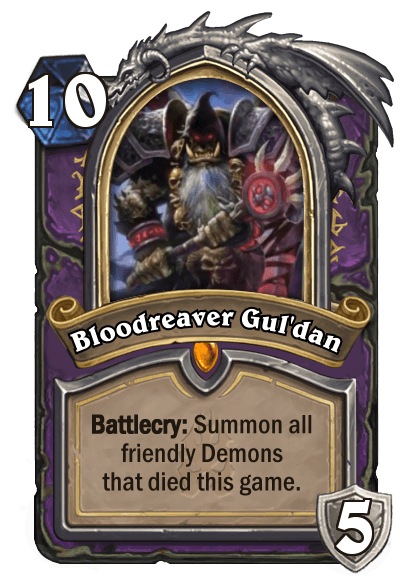
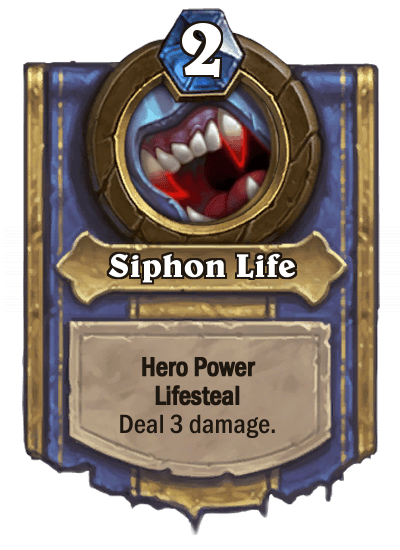
If there is one class that deserves a good Death Knight, it’s Warlock. Constantly shafted in past expansions with cards that lack synergy and a discard mechanic that has yet to find its footing, things looked grim for Hearthstone’s least popular class.
Thankfully… Bloodreaver Gul’dan is good. Really good.
Yes, the card is 10 mana. At that cost, its effect better be worth it, and I’d make the argument that it is. With an effect similar to N’Zoth, The Corruptor, Gul’dan resurrects all friendly demons that died that game. While it’s hard to see exactly what a best-case scenario will be for this card, the potential is there. With the right deck, Gul’dan‘s battlecry could turn the tide from having a losing board to a winning board in a matter of seconds. Just like how N’Zoth ushered in an era of deathrattle decks, Gul’dan will help give demon decks a permanent place in the Hearthstone community.
And we haven’t even gotten to the hero power, which is far from just the “cherry on top.” With a “Deal 3 damage, Lifesteal” combination Siphon Life solidifies Gul’dan’s value in any Warlock control deck. It addresses Warlock’s main weakness of a lack of healing without compromising anything. By the tail-end of a game when Gul’dan is played, is a Warlock going to want to be dealing damage to itself to draw additional cards? Any Warlock player worth his/her/their salt would probably say, “absolutely not.” Siphon Life is a powerful follow-up to an already powerful battlecry, and I fully expect Gul’dan to see play because of this.
Warlock is back, baby.
3. Deathstalker Rexxar – Hunter
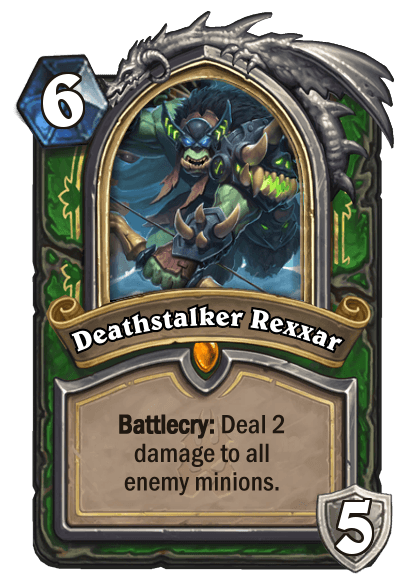
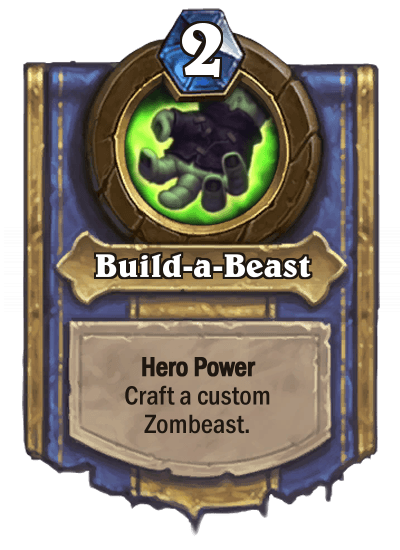
At this point in the tier-list, a big selling point (with the exception of Paladin) of the following cards ended up being their cost. At six mana, Deathstalker Rexxar is the second-cheapest Death Knight, and comes packed with a strong battlecry that is essentially Consecration. Given that Hunter has little to no good AOE cards outside of Unleash the Hounds, Rexxar’s battlecry is a welcome addition to the class.
Rexxar’s hero power also helps to address a big weakness of most Hunter decklists: a lack of draw power. While Quickshot, Tracking, and Flare have been used in the past to cycle quickly to powerful burst-damage cards like Kill Command, Hunter often finds itself conceding in matchups where it loses board control. With Build-a-Beast, aggro Hunter has a much better shot of competing against control classes like Paladin and Priest. Under normal circumstances, it will still probably lose to them – that’s just the nature of an aggro v. control matchup. However, the ability to conjure minions out of thin air ought to make these types of matchups a bit closer.
Even more enticing is the possibility of Rexxar finally allowing Hunter to break into the control meta that Hearthstone seems to be constantly pushing towards. Thanks to Rexxar’s strong board clear and “draw” power from Build-a-Beast, Control Hunter is closer to reality than it’s ever been before. And with new chunkier cards like Corpse Widow and Abominable Snowman to add to the decklist, post-Frozen Throne Hunter looks like it’ll be able to hold its own in numerous matchups.
With such versatility at his disposal, Rexxar is a clear winner.
2. Uther of the Ebon Blade – Paladin

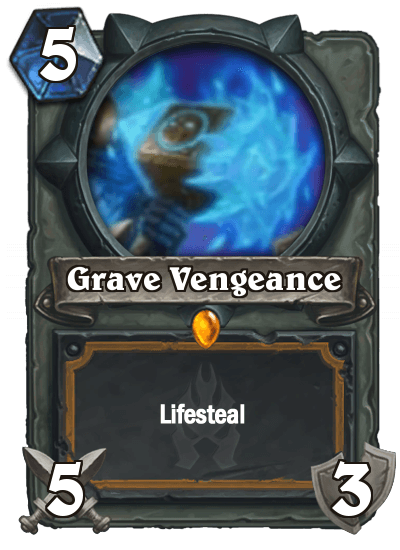

To say I was nervous going into the reveal of the Paladin Death Knight is an understatement. Paladin is my favorite class in Hearthstone, and I find myself being ever more critical of every new card release for the bringer of justice. Upon seeing Uther of the Ebon Blade, however, I can lay all anxieties to rest. The card looks good, and I say that from as unbiased of a standpoint as possible.
First off is the 5/3 Ashbringer + Lifesteal of a combo. Given Blizzard’s valuation of 5 mana for Tirion Fordring’s great weapon, I’d place Uther’s battlecry around 7. Lifesteal is a fantastic addition to an already great weapon, ensuring that Paladin has a steady stream of healing while simultaneously chipping away at the enemy hero’s health and/or board. At best, Grave Vengeance can heal Uther for 15 while dealing 15 damage to his opponent. Alternatively, it can be used to create tempo and allow for smart removal of key enemy minions. In this sense, Grave Vengeance essentially grants Uther Immune against enemy minions, while serving as a heal when used for face damage. That versatility is essential, and is part of what makes Uther rank so high on this list.
The other part is Uther’s dream-scenario hero power. While 2/2 minions are solid in and of themselves (a clear upgrade over Justicar Trueheart’s two 1/1s, in my opinion), The Four Horsemen come with an extra condition. If all four are present on the field, using Uther’s hero power automatically destroys the other hero. While crazy, and obviously extremely difficult to execute, the potential for Uther to serve as an Exodia-like win-condition is exciting, and will likely lead to brand new archetypes to take advantage of it.
At the very least, Uther has a fantastic weapon and a pretty-strong hero power with pseudo-taunt. At its best, it’ll win you even the most dire-looking of control v. control fatigue matches. That’s worth something in my book.
1. Thrall, Deathseer – Shaman

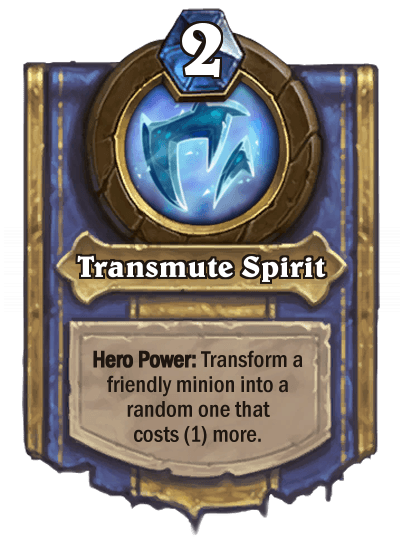
I had a hard time choosing between #2 and #1 of this list. As a hardcore Paladin main, I’m the first to admit the bias that I have towards the class. Even still, it’d be hard to argue that Uther of the Ebon Blade isn’t one of the best cards of this expansion. However, ultimately, the choice came down to mana; which card gives me the best value for its cost? In this regard, it’s darn near impossible to beat Thrall, Deathseer.
This card is an absolute beast. You thought Evolve Shaman was already powerful? Throw in Thrall, and get ready for (depending upon who’s controlling him) either the time of your life or your worst nightmare. At 5 mana, Thrall is affordable, and will see play in all sorts of Shaman decks. His battlecry is essentially two Evolves in one, allowing a decent board to steamroll into a disgustingly strong army of madness. His hero power, although less crazy, is good, considering the fact that Shaman players will be able to use it from turn 6 (turn 5 if you have The Coin and play Thrall on turn 4) for the rest of the game. So while all the other more-expensive Death Knights sit pretty in players’ hands, Thrall will be busy wrecking havoc early on, and for turns to come.
As a non-Shaman player, I am truly afraid for the future of Hearthstone once Knights of the Frozen Throne and Thrall, Deathseer go live on Thursday.
David is the founder of The Punished Backlog. He has a problem finishing games he starts.
Just beat: Donkey Kong Bananza.
Working on: Hollow Knight: Silksong.
Can't wait for: Metroid Prime 4: Beyond.
Follow David on Twitter at @David_Silbert to keep up to date with all things The Punished Backlog.








